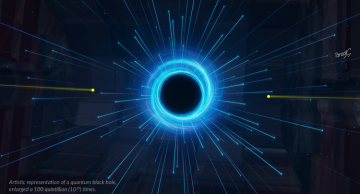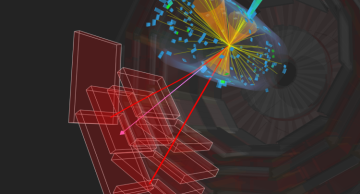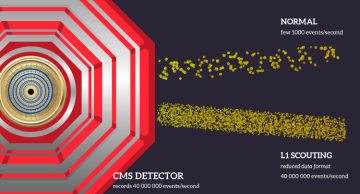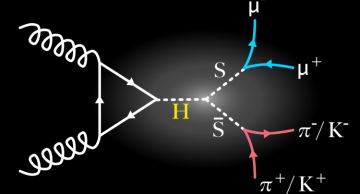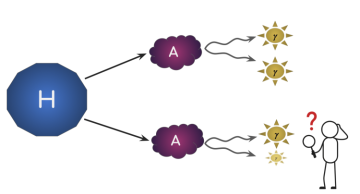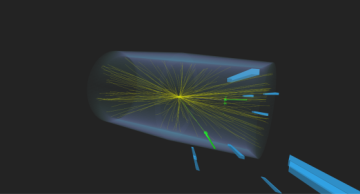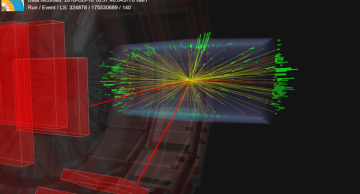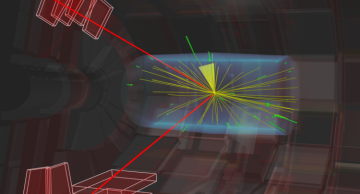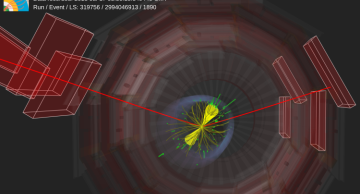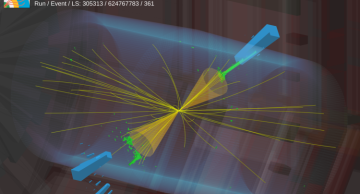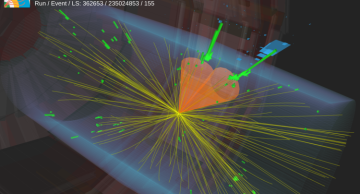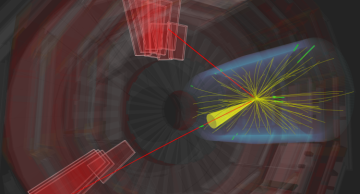The CMS experiment utilises cutting-edge machine learning techniques to search for microscopic, quantum black holes and other exotic objects that evaporate in an instant.
Black holes are amongst the most fascinating objects in the universe.…
In the first search of its kind at a particle collider, the CMS experiment looks for partially visible sprays of particles (jets), containing leptons and dark matter using physics-informed machine learning.
Can we shed light on dark matter?…
The CMS experiment is utilising a novel technique called L1 Scouting, which allows it to record data from all collisions, without any selection, but in a reduced format. A first pioneer physics result using this data showcases the immense…
In a first search of its kind at the LHC, the CMS experiment looks for light beyond-the-standard-model particles with a mass in the GeV range that decay into charged hadrons and muons. It establishes that if they exist, they would be produced…
CMS breaks new ground by reconstructing challenging photon signatures using machine learning, opening new paths in the search for physics beyond the standard model.
What if a new exotic particle from a non-standard Higgs boson decay escaped…
The CMS experiment sets limits for BSM particles down to tens-of-MeV aided by machine learning techniques.
Axion-like particles (ALPs) are hypothetical light-weight neutral bosons that could solve deep mysteries in physics, from the strong CP…
The CMS experiment studies the Higgs boson as a potential window into dark matter, and sets constraints on this mechanism, which gives rise to isotropic sprays of low-energy particles.
Quantum chromodynamics (QCD) describes the strong…
A primary goal of the Large Hadron Collider (LHC) is to hunt for evidence of beyond the Standard Model (BSM) dynamics through deviations from the Standard Model (SM) predictions. If the mass of BSM particles exceeds the energy accessible in…
In the world of elementary particles, there are twelve generic types of fermions (spin ½ particles): 3 up-type quarks, 3 down-type quarks, 3 charged leptons, and 3 neutrinos. They come in three generations. The number “3” is really a magic…
The completion of the standard model (SM) with the discovery of the Higgs boson stands as a resounding success in the world of particle physics. However, significant questions remain unanswered, such as the nature of dark matter (DM), and the…
The discovery of the Higgs boson represents a significant breakthrough in understanding the universe’s fundamental structure and dynamics. Despite this achievement, numerous profound mysteries persist, namely what is the nature of dark matter, why…
Did you know that every second more than 100 trillion tiny particles called neutrinos pass through your body without causing any harm? These mysterious particles are produced abundantly throughout the universe in events like nuclear reactions…
Pagination
- Previous page
- Current page 1
- Page 2
- Page 3
- Next page

